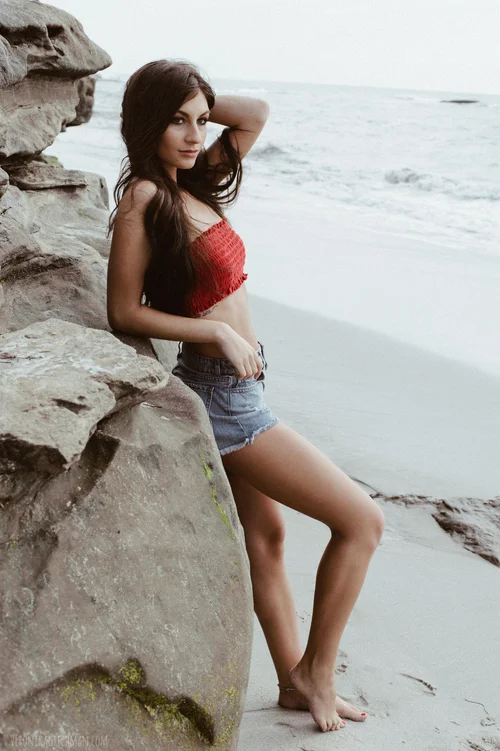5 do it yourself ideas for outrageous product photography
Most individuals have a couple of point of views on product photography-- either it's a breeze for any person with a smartphone, or it's a very advanced endeavour that calls for the services of a specialist.
We think the reality is somewhere in the center. With the ideal equipment and also some fundamental instruction, anyone can create great product shots. With these five fundamental product photography ideas, you advertising campaign photography can produce top quality product photos that will assist you transform site visitors right into paying clients (or whip the media right into a frenzy when they see your shots in the Flaunter collection!).
1. Take formal product shots-- then have some enjoyable
When you're doing product photography, you must make the most of your time and also enjoy. While you've got your camera, lights and also items all set, you should take a wide variety of pictures.
Make certain to obtain the clean, straightforward shots that reveal your product from all angles. Obtain the front, the back as well as the sides, and also see to it to scoot in close for some information shots. These photos can be essential for the customer when they are evaluating a acquisition.

75% of customers price the quality of product pictures as ' essential' or ' extremely vital' to their purchasing decision-- Upwork
2. Use customized white equilibrium
Have you ever taken a photo where the colours turned out really odd? Probably, it was a white equilibrium problem. On the other side, when you get white equilibrium perfect, colours will look flawlessly all-natural. Correct white balance is just one of the most effective methods to obtain a excellent photo.
Practically every video camera has the ability to use different white equilibrium setups. Many video cameras begin on an ' vehicle white balance' mode, which (as the name implies) immediately analyzes the light in your scene and also picks a proper setting ... most of the moment.
Auto white balance might be good enough for snapshots, but also for excellent product shots, you need to get manual. Dig into the setups of your cam as well as attempt to match the white equilibrium to the scene with presets.
If those do not function, you may be able to establish a personalized white equilibrium making use of the Kelvin scale. A lot of video cameras provide alternatives from around 3,000 K (very yellow) to 10,000 K ( really blue). You can try to set this by hand, but the best means is to place a white piece of paper beside your product and rise close. Then utilize custom-made white equilibrium to establish your video camera off that notepad.

3. Pay attention to details
Getting premium product photos is normally a somewhat time-consuming procedure, particularly if you do not have a dedicated workshop setup. Whatever setup you have, put in the time to do the work right.
Put in the time to best the lighting, get the history exactly right, choose the ideal angle and also locate the optimal colour setups to nail your image. It'll take a while, but it'll repay when you don't have to do much editing and enhancing of your pictures as well as when your consumers start looking at those photos.
Some points to watch out for:
• Dust, finger prints, or smudges on your products or histories

• Not focusing the lens correctly on the topic
• Camera shake as well as vibration
• Reduced light degrees ( resulting in high ISO, slow shutter speed and also poor image high quality).
• Running out of batteries or memory cards in the middle of the shoot.
4. Usage reflections
One great means to develop unique, lovely product shots is to make use of representations. Representations create a feeling of depth and complexity in an image. There are a few ways to produce representations in a house workshop.
A mirror. Make certain it's thoroughly cleaned up (with non-streaking cleaner), after that place your product on the top for a clean representation. Shoot from a reduced angle, virtually parallel with the mirror, for best impact.
Light weight aluminum foil. Peel a large sheet off a roll of conventional cooking foil, being careful to maintain it as level as feasible, then place it the like a mirror. Be careful to maintain the ragged edges out of the photo.Water. Either area a thin layer of water in a tray and place your product there, or simply pour some water on a level surface area.
This technique generally functions ideal when you use a background like building paper or sheets to manage the history-- or ad campaign photography when you have a pure white area-- given that you will not want a representation of your ceiling follower on your service web page.
5. Light the history, not just the product
Even a beginner product photographer will certainly figure out that a product needs to be lit correctly permanently images. However lighting the history is not intuitive. Think it or otherwise, lighting your histories can greatly enhance the quality of your product shots.
Lighting the history has 2 positives. Initially, if you're planning to eliminate the history from your photos (or preparing to have Pixc do it for you), a intense, clean background makes this procedure very easy and offers the very best results.
Even as a beginner professional photographer, using these five ideas, you should have the ability to generate some great photos for your products as well as reap the benefits today.